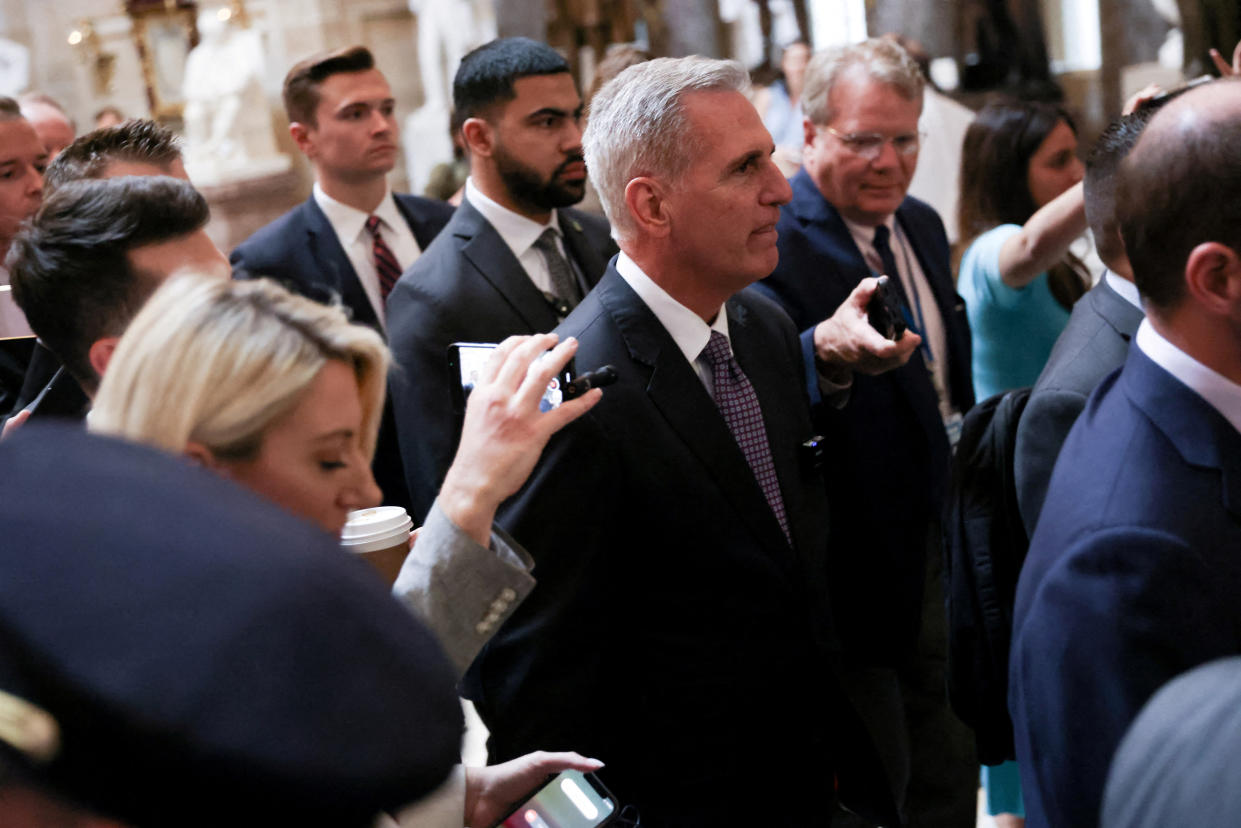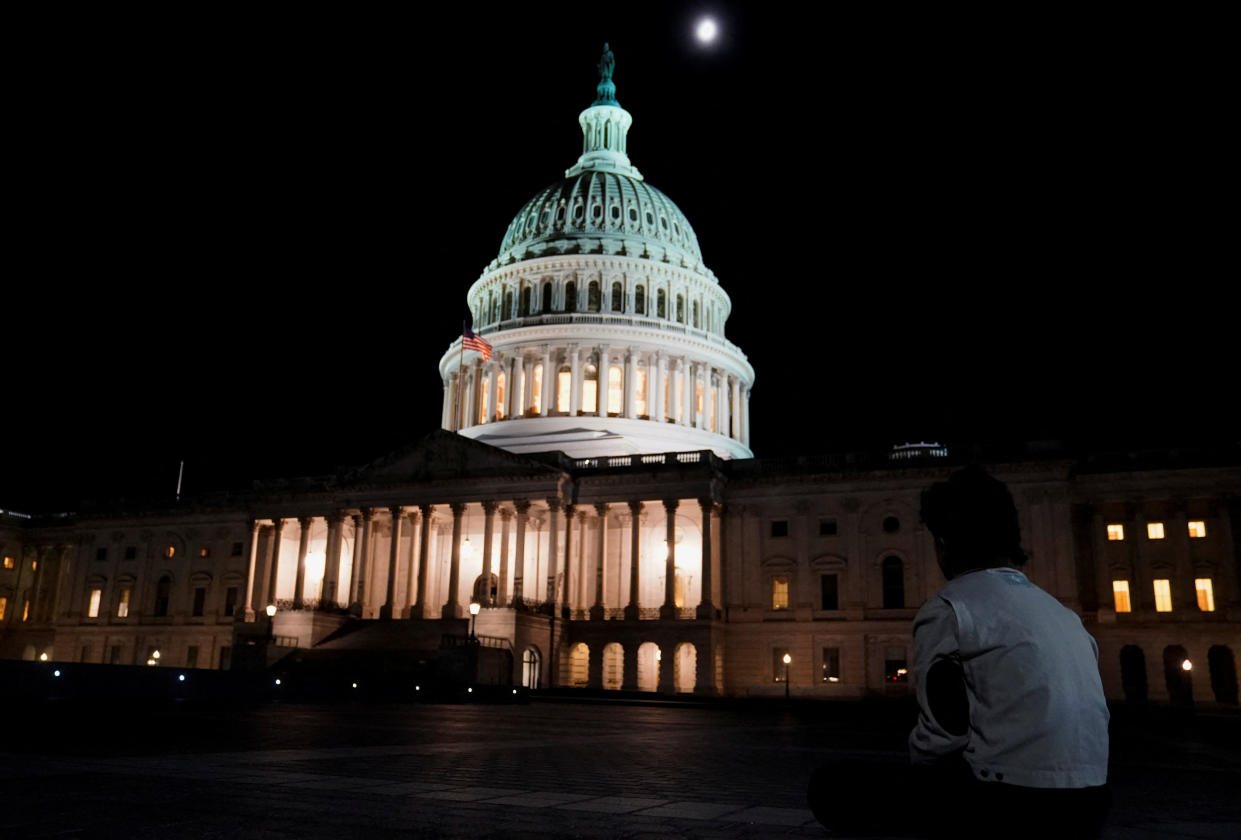The debt ceiling standoff may cost us $1 trillion
The 2023 debt ceiling standoff is over. The consequences are not.
It may seem like every debt ceiling showdown follows a standard script, with everything going back to normal once the foolish drama is over.
The basic plot: With the nation’s borrowing limit set by law and federal borrowing going ever higher, Congress has to raise the limit every couple of years. Republicans, if they have the votes, insist on spending cuts as a condition of allowing the government to borrow more. There’s intense bargaining and overheated talk of a possible US default on some of its obligations. That briefly unnerves financial markets.
Then, a last-second deal materializes, averting disaster, and markets settle down.
The 2023 debt saga followed the usual playbook, except for one thing: Everything has not returned to normal. Instead, markets now deem US Treasury securities more risky than before the June deal to raise the borrowing limit. That increases the cost of borrowing to the government and to businesses and individuals as well.
During the next 10 years, higher interest rates due solely to Congressional budget shenanigans could raise borrowing costs in the United States by nearly $1 trillion, according to new research by David Kotok, chief investment officer of investing firm Cumberland Advisors. While that's a large price tag, the costs are likely to be spread broadly across the economy in ways likely to allow the perpetrators in Congress to escape accountability.
Kotok looks at the cost of credit-default swaps on US Treasuries to assess higher borrowing costs throughout the US economy. A credit-default swap, or CDS, is like an insurance policy on a bond. The holder of a bond sometimes wants to cover the risk that the issuer will default and fail to pay the interest or principal. Other investors offer CDSs that will cover losses at prices the market determines.
Read more: CDs vs. bonds: Which is right for me?

As expected, the cost of insuring against a US default rose as Congress played chicken with the nation's creditworthiness earlier this year. The US government hit its borrowing limit in January 2023, which forced the Treasury Dept. to move money around to meet all the government’s obligations. Treasury estimated it would be able to do that until June, when it would have to default on some payments.
Before Treasury hit the borrowing limit in January, the cost of insuring a 10-year Treasury bond was about 35 basis points, according to Bloomberg data. That’s equivalent to 0.35% of the face value of the bond per year, paid like an insurance premium.
The cost of that insurance went as high as 62 basis points as the June deadline drew near. Once Congress struck a deal to suspend the debt ceiling until 2025, the price of a CDS dropped, as expected. But it didn’t drop back to pre-crisis levels. Instead, it settled at around 41 basis points. Then it rose to around 48 basis points after rating agency Fitch downgraded US debt by one notch on August 1.
The interest rate on Treasury bonds rises by roughly the same amount as the price of insuring against their default. So US interest rates are roughly 10 basis points higher now than they’d be if Congress had simply raised the borrowing limit smoothly, without any risk of default.
One-tenth of a percentage point may not sound like much, but applied to the whole range of federal and private debt in the United States, it adds up.
Raising the rate the US must pay to borrow by a single basis point adds $2.7 billion a year to federal borrowing costs, Kotok estimates. Multiplying by 10 brings the annual total to $27 billion in additional borrowing costs. Projecting that out for a decade brings the total to $270 billion, but compounding could make it more like $300 billion.
Taxpayers are on the hook for that $300 billion. Republicans who control the House of Representatives and demanded spending cuts as a condition of raising the borrowing limit claim the budget deal will reduce deficits by $1.3 trillion during the next decade, including $240 billion in lower interest payments on US debt. But that doesn’t include the possible $300 billion in higher borrowing costs given that the market now perceives US debt as riskier. So the higher risk of default is zeroing out that savings.
[Drop Rick Newman a note, follow him on Twitter, or sign up for his newsletter.]
The Republican projections are also unusually rosy.
The Penn Wharton Budget Model estimates that the GOP’s forecast of $1.3 trillion in savings is at the high end of possible outcomes, with the low end being $234 billion — not including $300 billion in higher borrowing costs. Under that scenario, the whole budget deal would produce no savings at all and actually cost taxpayers nearly $70 billion.

The 10-year Treasury bond is the benchmark for mortgage rates and many other consumer and business loans, which rise and fall in proportion to the 10-year. So a 10 basis point hike in the 10-year will produce a similar rise in most other rates. In addition to $27 trillion in federal US debt, there’s also about $43 trillion in business, individual, and state and local debt.Kotok estimates a 10-basis point rise in borrowing costs across all that debt will cost about $1 trillion during the next decade.
Most people won’t notice, so they won’t barnstorm Congress demanding better budget stewardship. The CDS market is complex and obscure, and even some professional investors won't account for this gradually rising risk of a US default. But they’ll pay, anyway.
Congressional recklessness on the borrowing limit is far from over. The suspension of the debt ceiling until January 2025 means another self-destructive budget fight is likely then. When Fitch downgraded the US credit rating on August 1, it cited “expected fiscal deterioration over the next three years,” the “erosion of governance,” and “repeated debt limit standoffs and last-minute resolutions.” If there was some way of knowing the 2023 standoff was the last one, Fitch might not have downgraded.
But there’s every reason to think another game of chicken is coming.
Rick Newman is a senior columnist for Yahoo Finance. Follow him on Twitter at @rickjnewman.
Click here for politics news related to business and money
Read the latest financial and business news from Yahoo Finance
